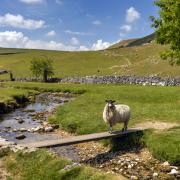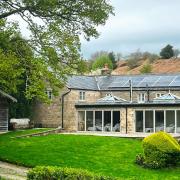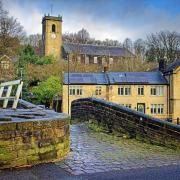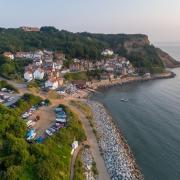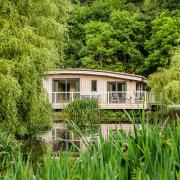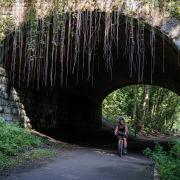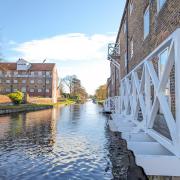We venture to some deserted beaches for those who love solitude on the sands and get up close with some of the coast’s most notable bridges – who hasn’t stood and watched Whitby’s famous swing bridge in action?
Divided neatly by the River Esk, Whitby is very much a town of two halves.
Those wishing to drive from the West Cliff side – where Captain Cook’s statue and the Whalebone Arch watch over the famous Khyber Pass leading down to the West Pier and the Magpie Café – to the East Cliff, home to Whitby Museum, Pannett Park and the Abbey, have only a couple of options: head along the A171 and over the ‘new’ (only 43-odd years old!) road bridge, or take the more picturesque, but frequently frustrating, Swing Bridge in the town centre.
It’s often thronged with tourists – so much so that, as of this year, it’s closed to traffic other than buses in the peak seasons of spring and summer. And even when it’s open to traffic, it’s slow – not wide enough for two vehicles, it’s controlled by traffic lights.
And finally, often several times a day during the summer, it can be closed completely as its swing mechanism kicks in to allow tall vessels to pass through. But this entirely practical function has become something of a tourist attraction in its own right. No one seems to really mind waiting to cross the river when there’s so much to see!

There’s been a bridge of one sort or another at this point for centuries, with written records dating from the mid-1300s. Previous incarnations included, in the late 1700s and early 1800s, a Heath Robinson-esque confection of wood and rope which frequently got tangled up in the rigging of sailing ships as they passed through.
The current bridge, built by the same Manchester engineering firm that constructed the Blackpool tower, was opened in 1908, and has been serving the town faithfully ever since – barring the odd temper tantrum such as in 2021, when it broke down several times.
It is, for all you pontists out there (and yes, of course there’s a word just for bridge enthusiasts), a rare UK example of a twin leaf bridge carrying an A class road.
Twenty miles down the coast in Scarborough, said pontists can find a very different, but equally admired bridge. The gracious pistachio green Spa Bridge takes foot traffic from the town’s North to South sides, across one of the main roads to the seafront.

Its creator, The Cliff Bridge Company, was founded in 1826 with the aim of maximising revenue from the extremely fashionable Spa – the bridge went up in double-quick time and opened just a year later, with a remarkable opening ceremony involving a horse-drawn mail coach being driven at high speed across it.
At its southern end, as well as the Spa itself, it’s home to one of Scarborough’s more extraordinary buildings – the filigreed Spa Chalet, designed by Sir Joseph Paxton, better known as the designer of the glittering Crystal Palace.
Local legend has it that when the Prince of Wales visited his friend the Earl of Londesborough at Londesborough Lodge in The Crescent in the 1870s, a red carpet was laid all the way from the house, through its gardens and across the ornate footbridge that crosses Vernon Road, then along the Spa Bridge to give the future King Edward VII suitably regal access to the Spa and all its delights.

One final stop for our bridge enthusiasts on this coastal trail – Filey, and the beautifully detailed Church Bridge, which crosses Ravine Road to take walkers from the town to St Oswald's Church.
An earlier (and much lower!) stone bridge was washed away by floods in 1857 and replaced by wrought iron girders. By 1994, they were deemed unsafe and in need of replacement. Rather marvellously, instead of a modern bridge, a structure which had been cast in 1847 at Joseph Butler's Stanningley Iron
Works, near Leeds, for a railway at Ripon was repaired and relocated, complete with atmospheric converted gas lamps.
For more information on what’s on across the Yorkshire Coast
#placeofsurprise and the North York Moors this month, please visit discoveryorkshirecoast.com or call the Tourism Bureau on 01723 383636.




